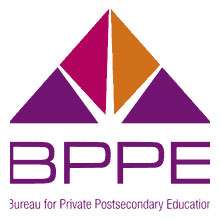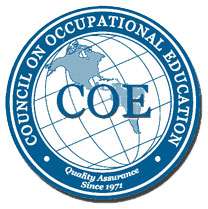In recent years, the healthcare industry has witnessed significant transformation, from technological advancements to regulatory overhauls. Among the many components of this dynamic sector, medical billing and coding play a pivotal role, acting as the linchpins of healthcare administration.
This article seeks to dissect the fundamentals of medical billing and coding, examining their roles, processes, challenges, and the promising career opportunities they offer.
What is Medical Billing?
Medical billing is a critical process in the healthcare system that translates healthcare services provided to patients into a billing claim. Essentially, it is the practice of submitting and following up on claims with health insurance companies to receive payment for the services rendered by a healthcare provider. This process not only ensures that healthcare providers are duly compensated but also facilitates communication between the medical practice and payers.
The medical billing process begins when a patient schedules an appointment and is registered in the healthcare provider’s system. Billing specialists then collect key information, including the patient’s insurance details and the medical services provided. This information is used to submit claims to insurance companies, manage any discrepancies, and ensure accurate billing for the healthcare provider.
What is Medical Coding?
Medical coding, on the other hand, serves as a translator, converting detailed written descriptions of medical diagnoses, procedures, and other services into universally recognized alphanumeric codes. These codes are critical for standardizing communication among healthcare providers, insurance payers, and patients.
Medical coders utilize coding manuals and software to assign codes from established systems such as the International Classification of Diseases (ICD), Current Procedural Terminology (CPT), and the Healthcare Common Procedure Coding System (HCPCS). Accurate medical coding is essential for claims processing and impacts several facets of healthcare, including research, budgeting, and resource allocation.
Key Differences Between Medical Billing and Medical Coding
While medical billing and coding are interrelated and often discussed in tandem, they are distinct functions with specific roles and responsibilities. Medical billing focuses primarily on the financial transactions that ensure healthcare providers are paid for their services. It involves drafting claims based on the coded information provided by medical coders and necessitates a high level of interaction with insurance companies and patients.
Conversely, medical coding requires in-depth knowledge of coding languages and the ability to extract pertinent information from patient records to produce accurate medical codes. Coders work more closely with clinical documentation and require meticulous attention to detail to ensure the accurate translation of diagnoses and treatments.
Essential Skills and Qualifications for Medical Billing and Coding
Effective medical billers and coders must possess a unique set of skills and qualifications. First and foremost, attention to detail is paramount. With potentially thousands of codes applied in healthcare services, even a small error can lead to claim denials, affecting revenue flow.
Moreover, proficiency in medical terminology and anatomy is crucial. This knowledge base enables professionals to interpret and translate medical documentation accurately. Additionally, software proficiency is also critical, as billers and coders use specialized software and electronic health records (EHR) systems on a daily basis.
Certifications such as Certified Professional Coder (CPC), Certified Coding Specialist (CCS), or Certified Billing and Coding Specialist (CBCS) are highly recommended. These certifications validate a professional’s expertise in the field and are often required by employers.
Step-by-Step Medical Billing and Coding Process
The medical billing and coding process is a sequential workflow that ensures medical services are reimbursed accurately and promptly.
1. Patient Registration and Documentation:
This initial step involves collecting and verifying the patient’s personal and insurance information, including the recording of medical history and current visit details.
2. Assigning Medical Codes:
Once the healthcare services are provided, medical coders review the clinical documentation and assign appropriate codes that correspond to the services rendered.
3. Submitting Insurance Claims:
The medical billing specialist uses the coded data to prepare a claim that is submitted to the patient’s insurance provider for reimbursement. This step requires ensuring that all information is accurate and adheres to payer-specific requirements.
4. Handling Claim Denials and Appeals:
If a claim is denied, the billing specialist must investigate the cause and take corrective action to rectify the issue. This may involve resubmitting the claim or filing an appeal, supplying additional documentation as needed, and communicating with both the insurance company and patient to resolve the matter.
Common Challenges in Medical Billing and Coding
The field of medical billing and coding is punctuated by various challenges that can affect both healthcare providers and patients. Coding errors are a leading challenge, often resulting from misinterpretations of medical documentation or incorrect use coding systems. These errors can cause claim rejections and denials, leading to delayed payments.
Additionally, keeping up with changing regulations and coding updates is a constant hurdle. As healthcare regulations evolve, so do the codes and billing practices associated with them, necessitating continuous education and adaptation by professionals in this field.
Benefits of Pursuing a Career in Medical Billing and Coding
Despite these challenges, there are numerous benefits to pursuing a career in medical billing and coding. The healthcare sector is one of the most stable industries, and there is a growing demand for qualified billing and coding specialists. This demand ensures job stability and opportunities for career advancement.
Moreover, the field offers flexible work opportunities, including remote work and freelance positions, allowing for a better work-life balance. The potential for competitive salaries further enhances the appeal of this career path, with skilled professionals finding ample opportunities to grow both financially and professionally.
Tools and Software Used in Medical Billing and Coding
To efficiently tackle their responsibilities, medical billers and coders rely on a variety of tools and software. Electronic Health Records (EHR) systems are central to managing patient information and medical documentation. Similarly, Practice Management Software (PMS) aids in scheduling, billing, and managing patient data.
Coding software, such as EncoderPro.com, 3M CodeFinder, and others, streamline the coding process, helping coders maintain accuracy and efficiency. Finally, billing software like AdvancedMD and Kareo are integral for managing the billing cycle, from claim submission to payment posting.
Conclusion
Medical billing and coding are foundational to the healthcare system, ensuring that services provided translate into revenue for healthcare providers. As intertwined yet distinct professions, they require a strong understanding of medical terminology, coding systems, and billing procedures.
Those in the profession must navigate the challenges posed by continual changes in healthcare regulations, but the field remains a stable and promising career choice. As the healthcare industry evolves, the demand for knowledgeable billing and coding professionals is expected to rise, providing ample opportunities for growth and specialization.


